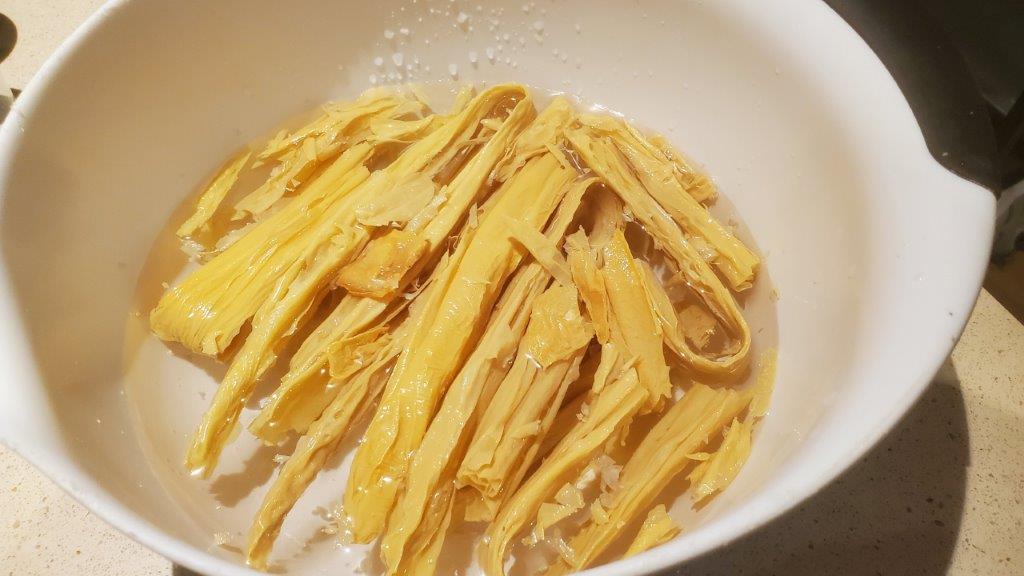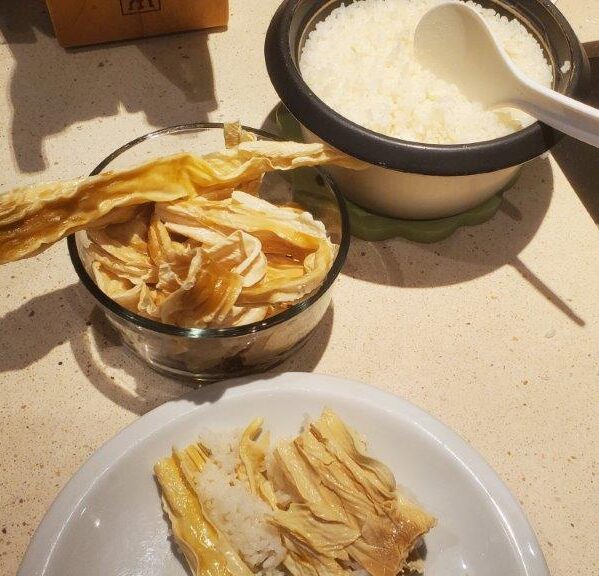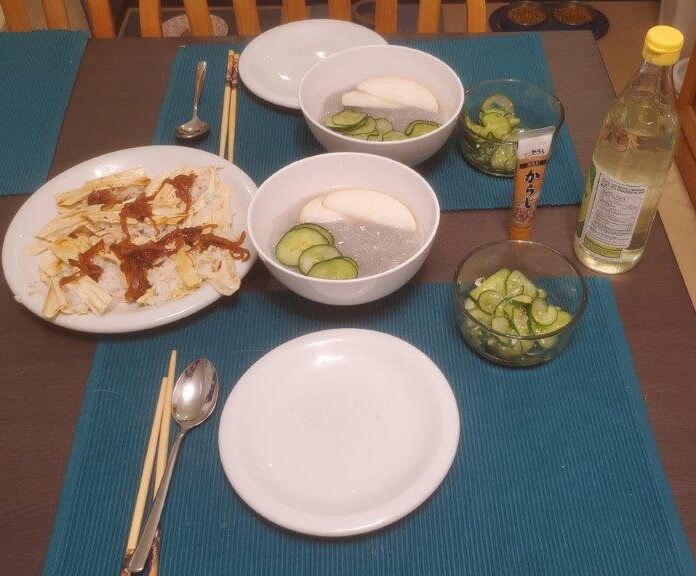Let’s get something out of the way right up front – alphabetical order is a social construct. Sure, we could put North Korea under “N”. That would make more sense, probably. Or we could put it under “D” for DPRK, which is what the United Nations does. After all, we put the “Democratic Republic of the Congo” there.
But we didn’t. We’re putting it here. Moving on.
North Korea is one of the most secretive states on the planet. Not for nothing is it called “The Hermit Kingdom.” And while there is a long traditional food culture in that part of the Korean peninsula, our understanding is that your average North Korean is more likely to be hungry than they are to be feasting on traditional delicacies.
So we’re going to split the difference here – we’re going to attempt to make one relatively modern North Korean dish, which was born out of the need to make something from very little. And to balance it, we’re also going to make a more traditional dish from the North.
All of this also has our usual caveats applied – we don’t know what we’re doing, we’re not very good at research, and a number of approximations, both intentional and un- have inevitably crept in.
The good news is that there are a number of excellent Korean supermarkets in Vancouver, so ingredient hunting was pretty straightforward.
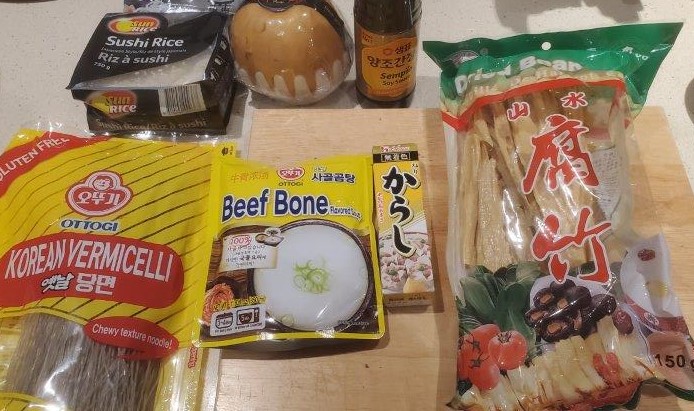
Look at all this neat stuff! You can tell it’s Korean by the Chinese characters on the bean curd sheets, and the Japanese ones on the mustard paste. The buckwheat noodles are at least DEFINITELY Korean, although on closer inspection they turned out to be sweet potato, and not buckwheat. Look, we’re trying, OK?
For our “modern make the best of it” dish, we’re making Injo Gogi Bop. This literally means “artificial meat rice.” This sounds worse than it is – the dish is actually just sushi rice inside a bean curd wrapper, with a flavorful sauce. Done right, the texture is almost, but not quite, entirely unlike meat.
Lots of sources talk about this dish, (here’s the Wikipedia article) but very few provide an actual recipe. We consulted our friend Ji Hyun for advice and she came through with a recipe. Thanks Ji Hyun! Weirdly, the only recipe on the English language internet that she found for us was from… a German meal kit site. She also found a video of some nice German people attempting to make it.
OK, so how do you do this? Rather than making bean curd wrappers from scratch, which is part of the origin of this dish, we opted to follow the meal kit route by buying ours premade and soaking them.
And this is the first place we went wrong – the meal kit site doesn’t say how LONG you need to soak these for. Opinions vary on the internet, but several hours is the low end, and we hadn’t allowed that. So they never really unfurled the way they were supposed to.
Next up, you make sushi rice. Rice cooker. Bam.
Finally, you make a sauce by frying some onions, green onion, and garlic together, then mixing that with soy sauce and Korean chili flakes.
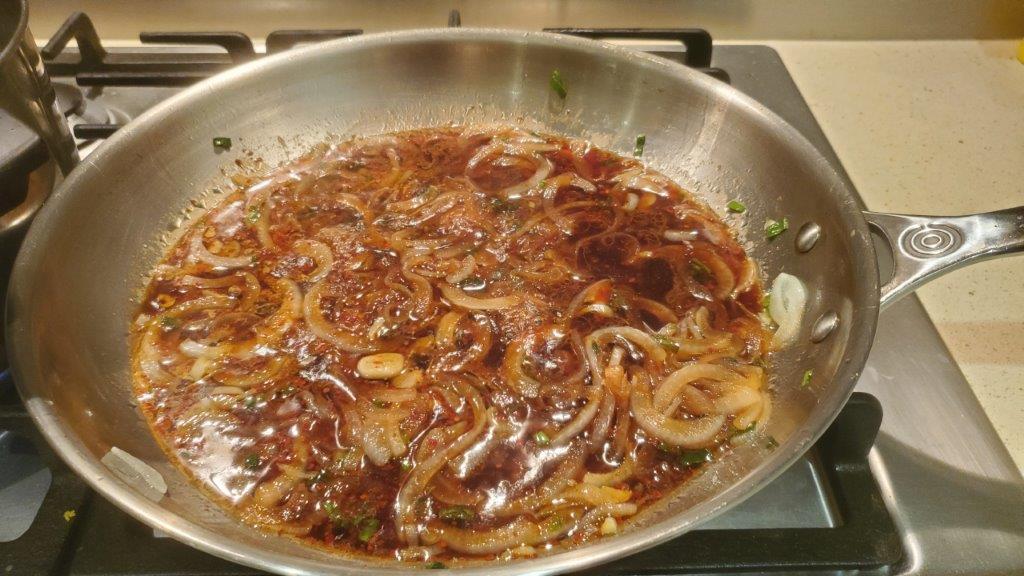
This is actually where 95% of the flavor in this dish comes from, and it wasn’t half bad at all.
The final assembly, in theory, consists of rolling out the beautifully flat soybean sheets, putting a dollop of sushi rice in each one, and then rolling them up to make a nice “meaty” little package.
In practice, our sheets never really unrolled, so we ended up having to make bean curd – rice – bean curd sandwiches instead.
For our second, more old-school dish, we decided to make a cold buckwheat noodle recipe called Mul Naengmyeon. I mentioned that the noodles we purchased did not seem to contain much buckwheat, but it turns out that’s not disqualifying – there’s a whole family of noodles that works for this dish, and the ones we bought seem to fall comfortably within it.
Being a cold dish, there wasn’t a LOT of complex prep here. Cook noodles in boiling water, shock in ice bath. They had a fascinating translucent color.
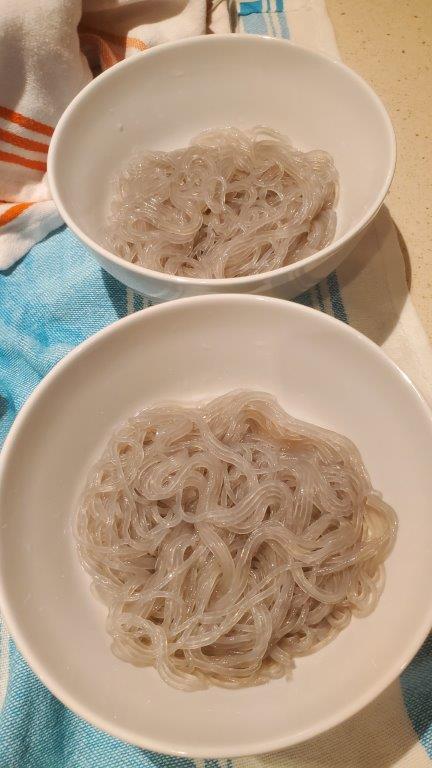
Top with broth (yes, out of a bag – we went lazy), slices of cucumber and Korean pear, and serve with mustard paste and vinegar on the side.
Finally, we made a banchan. If you’ve eaten in a Korean restaurant, you know that meals tend to be served with a bunch of tasty little side dishes called banchan. We were already making two mains, so we went with just one side, a cucumber and sesame salad.
And here’s the final spread, with the sauce on the Injo Gogi Bap.
Sure looks a mess, doesn’t it? Still, the important thing is taste, right? And this poverty food, born out of necessity and desperation was… actually pretty tasty! It’s hard to go wrong with garlic, soy, and chili as a seasoning mix. The noodles had a fun chewy texture, although I would say they definitely needed the mustard and vinegar to perk them up a bit. And our banchan, while basic, was also quite good.
And that was Korea, North! Next up, we’re staying in the “Ks” with, surprise, surprise, Korea, South.
Recipes:
Injo Gogi Bap
Mul Naengmyeon

